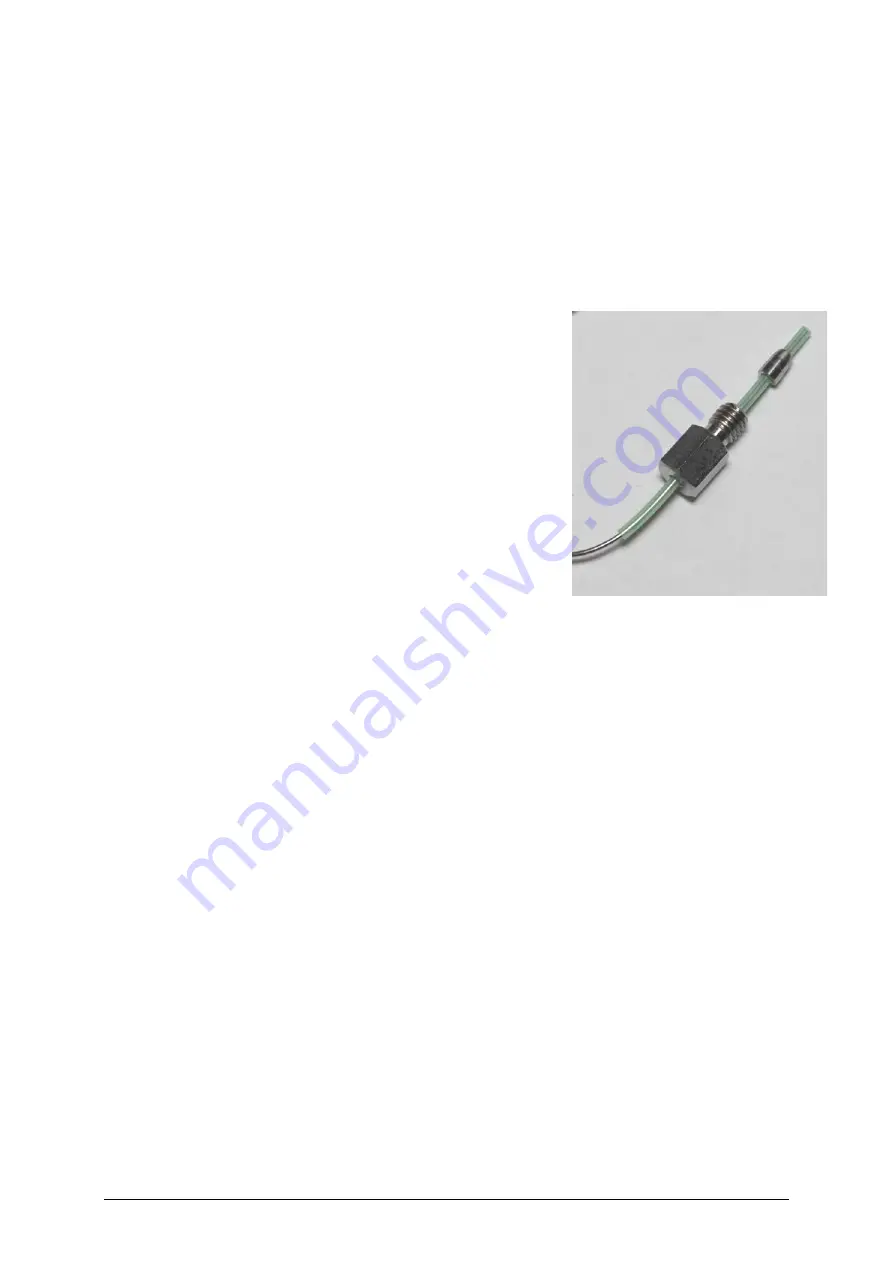
Application hints
Instruction Manual, Feb-17
16
bottom of the receiving port. Improper cutting of the tubing could lead to dead volume,
resulting in peak distortion such as fronting, tailing or broadening.
Procedure with stainless steel nuts and ferrules:
Slide the fitting at least 5 mm from the end of the clean cutting tube.
•
Insert the assembly into the receiving port, pushing the tubing into the port until it
bottoms out.
•
Using the delivered wrench, tighten an additional
½ to 1 turn past finger-tight. Remove the fitting to
confirm the ferrule is swaged onto the tube.
•
Because the ferrule is permanently attached to the
tubing we highly recommended that the fitting
only be used in the receiving port into which it was
initially swaged. Failure to this may result in dead
volume and/or leaks.
Fig. 9: Tubing sleeve
Making capillary tubing connections to 1/32”
capillaries
Smaller tubing sizes like 1/32” OD are being used with increasing frequency in
chromatography and related disciplines, and using these tubing sizes requires some special
skills normally unnecessary with 1/16” OD tubing. This is especially evident when using
the smaller tubing in receiving ports normally designed for the larger, 1/16” OD tubing.
Generally, the high pressure receiving ports in most of the equipment on the market have
an internal geometry supporting 1/16” OD tubing. This means that the port has an
internal pocket into which the 1/16” OD tubing extends. As long as tubing with the same
diameter
is used, potential dead volume resulting from the connection is kept to a minimum.
However, when the tubing is smaller than that which the receiving port was designed for,
it’s easy for dead volume to be introduced into the connection.
Numerous manufacturers have developed ways to adapt smaller, capillary tubing into the
receiving ports meant for larger OD tubing. Of the options available, two stand out as the
most popular. The first option involves customized ferrules which look similar to those
used for the larger tubing, but which feature smaller holes drilled through them to better
accommodate the capillary tubing.
Fortunately, the second option - the use of a special tubing sleeve - overcomes both of the
disadvantages exhibited by the customized ferrules. Tubing sleeves generally have a
controlled outer diameter (usually 1/16”) which allows them to fit into standard threaded
ports. And, since the sleeve will slide through a ferrule until it bottoms out in a receiving
Summary of Contents for TLC-MS INTERFACE 2
Page 1: ...INSTRUCTION MANUAL TLC MS INTERFACE 2...
Page 27: ......













































